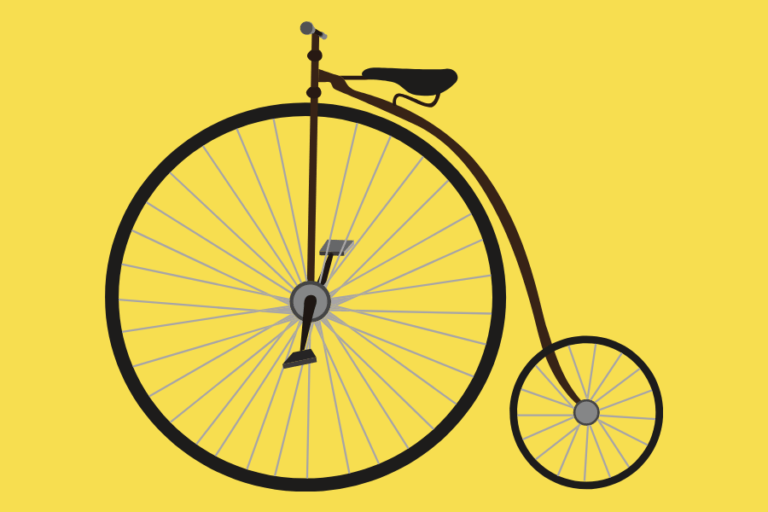Iver Johnson is a manufacturing company with a long and storied history. But what is the real deal behind this firearm and bicycle brand?

Born in 1841 in Norway, Iver Johnson spent most of his early years on the family farm. He learned about hard labor and long hours from a young age. Highly ambitious, he apprenticed under a gunsmith at the age of 16. He opened a gun store in Oslo but eventually immigrated to Massachusetts in 1863.
His skills made the transition to America easy because there was a huge demand for gun makers. For 8 years he worked at the Allen and Wheelock gun shop. He saved his money, learned English, and started his own business. He continued to work as a gunsmith and inventor up until he died in 1895.
Iver Johnson: The Brand
In 1871, Iver Johnson merged his gunsmith operations with Martin Bye to form the Johnson Bye & Company. Together they designed and filed patents for new firearms features. Their primary income was from sales of their self-designed, inexpensive models of revolvers.
In 1891, now known as Iver Johnson’s Arms and Cycle Works, business was on the rise. Johnson moved the company into a larger manufacturing facility in Fitchburg, Massachusetts. He hired many talented immigrant machinists and designers, and one of them invented the safety system used on their popular line of revolvers.
Iver Johnson died of tuberculosis in 1895 at the age of 54. His sons Fredrick, John, and Walter took over his business. They guided the company’s expansion as bicycle operations grew and added motorcycle manufacturing and sales.
Soon after, family ownership waned. The company dropped “Cycle Works” from its name, changed ownership, and moved several times.
Iver Johnson: The Bicycles
While much of the history of Iver Johnson focuses on firearms, many forget the company had a very successful bicycle manufacturing line.
They were able to easily convert their machinery to make bike parts. While other bicycle companies used stamped rear dropouts, theirs were forged. The steel frames were welded together, and they even made cones and cups for bearings.
Bicycle riders also had the option to customize their bikes, which was unique at the time. They could choose the seat, handlebars, brakes, pedals, tires, and color.
Cycling was a popular sport in Fitchburg at the turn of the century, and there were many bicycle clubs in the area. They took their role in the community very seriously and had strict rules each member must follow.
From 1891 to 1941, Iver Johnson’s Arms and Cycle Works produced around 700,000 bikes. Nearly every member of the bike clubs rode an Iver Johnson bike model. Known for both quality and performance, they advertised themselves as “America’s Finest Bicycle.”
Popular Iver Johnson Bicycle Models
In the late 1800s nearly all bicycle manufacturers used the same diamond-style frame. The bicycle world was forever changed when Fredrick Johnson submitted a patent for a new and original design of bike frames.
This new design would become the Truss Bridge frame and was one of their most popular models. It featured a curved tube under the top tube that strengthened the frame. Frederick modeled this frame after some of the most magnificent bridges in the country at the time. They began to build their bikes under the Truss Bridge design and then flooded the market using an ad campaign with the slogan, “Trust The Truss”.
They offered many different models over the years, with some bicycles designed for specific needs.
They sold recreational bikes for casual riders, like the Roadster and the Mobicycle. This model had a thin, fake gas tank on the top tube that could hold a battery for a horn or bike light.
For the race enthusiast, the best track bike to buy at the time was the Special Racer. They were the most expensive and high-quality racers available. World cycling champion Marshall Major Taylor rode one and was sponsored by the company in 1900 and 1901. After Taylor won several world-class championships under the Iver Johnson sponsorship, their bikes became some of the most sought-after in the world.
They even designed bikes that catered to the ladies. The women’s models had a skirt net near the rear tires that prevented dresses from getting caught in the spokes, chains, and gears. And if you wanted to ride with your family, there was a complete line of children’s velocipedes and scooters available.
Iver Johnson’s wide variety of bikes made it possible for almost anyone to find a model that fit their needs.
Iver Johnson Bicycles Today
In 1941, bike production stopped so that the company could ramp up production of firearms ahead of World War ll. Now considered vintage and highly collectible, Iver Johnson bikes are well sought after and relatively rare.
There are several websites (including eBay!) that you can find online if you want to buy one of these classic models, but prepare yourself for a steep price tag. Models in good condition can sell from $1,200 to $3,000. A bike frame, tire, or spare part can fetch anywhere between $100 – $300.
Although Iver Johnson may not be the most famous person in history, his legacy is still felt today. From bicycles to firearms, he made his mark on our society and will continue to do so for generations to come.
